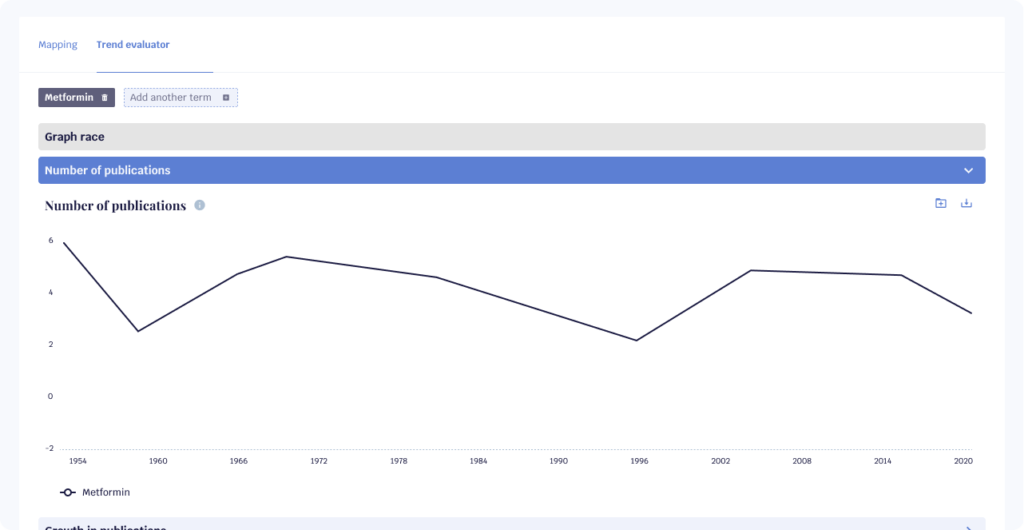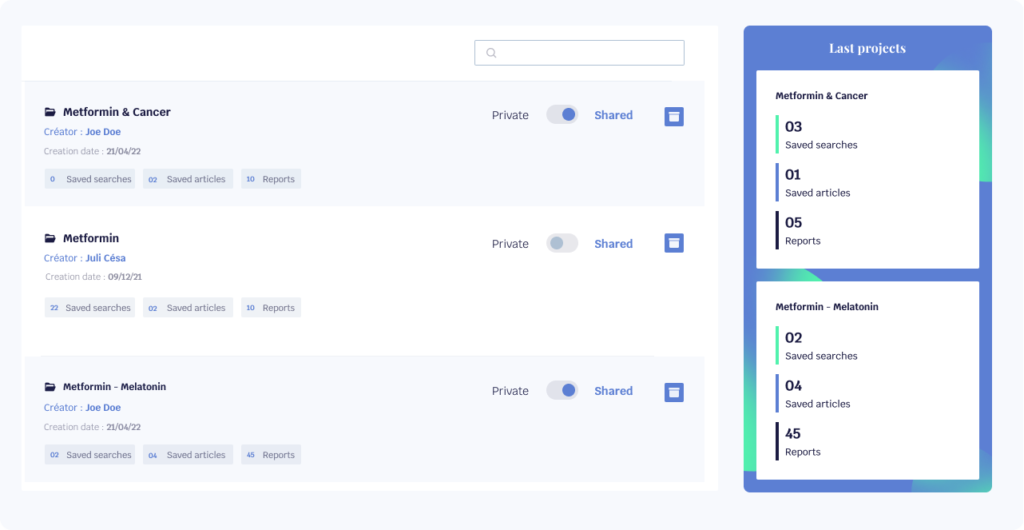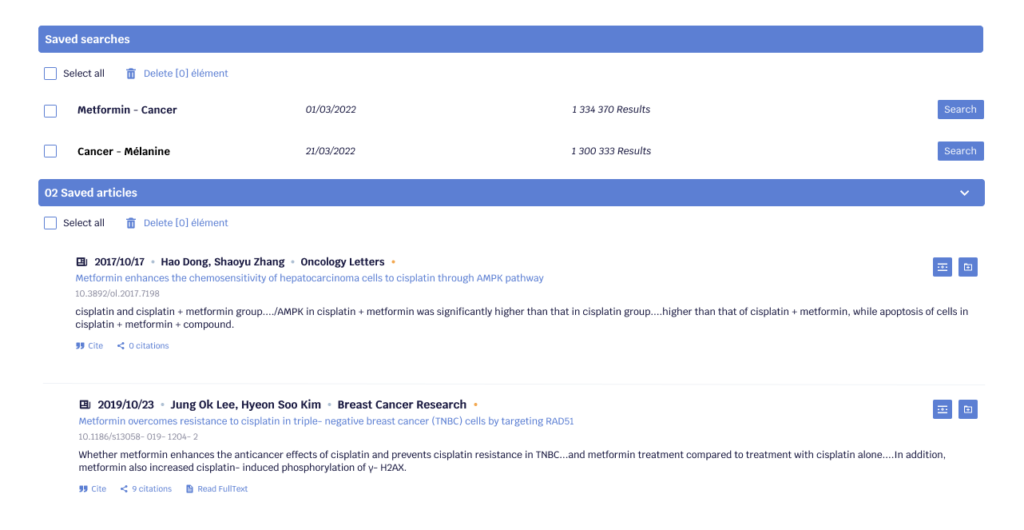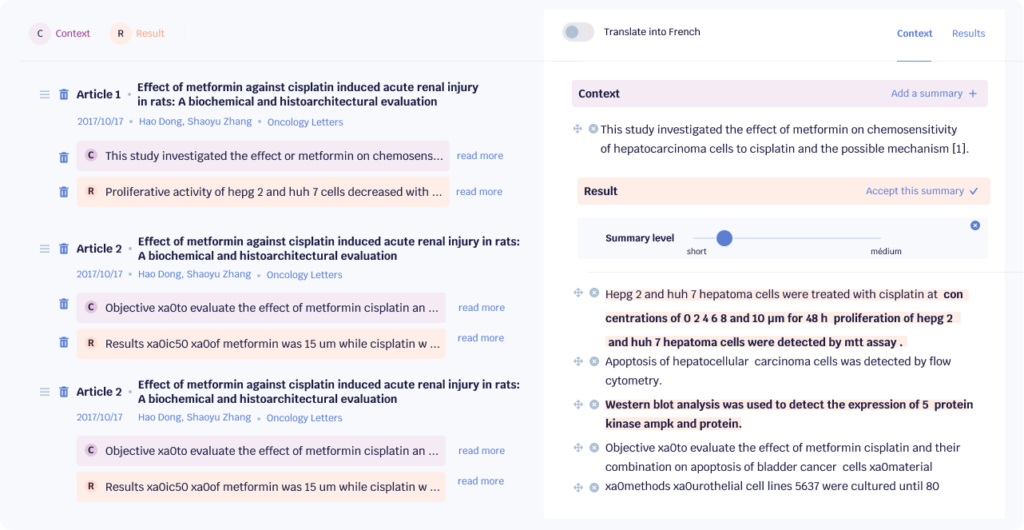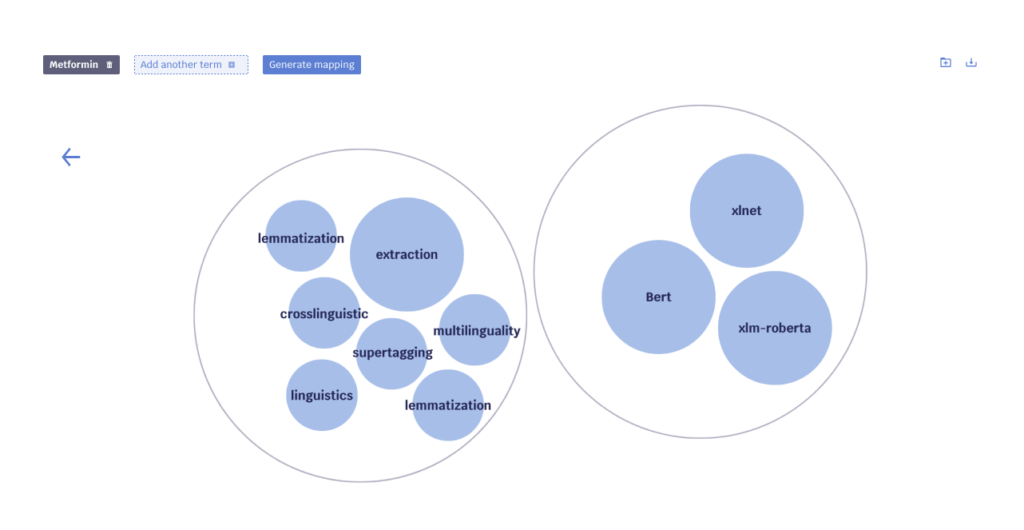The ultimate guide to maximizing your technology watch
Do you lack time to keep up with technology and scientific news? Or do you struggle to find information on the web? This ultimate guide will help you analyze trends and stay up-to-date in a dynamic field. You no longer have to fear being left behind!
Summary :
1. Understanding sources of technology data
Discover the keys to easily find and understand data sources for your technology watch! In this guide, learn how to identify accurate and up-to-date sources of information, leverage current tools, and stay up-to-date with the latest technologies through effective technology watch.
What types of data to monitor for your technology watch :
In this section, we will present the various types of data that can be used for effective technology watch. It is important to find the most reliable and relevant data sources in order to be well-informed and ready to make informed decisions.

Read more
.Le graphique présenté ci-dessous répertorie certaines des principales plateformes offrant un accès à de l’information scientifique :
- Scientific articles result from research studies conducted by a group of experts in a specific scientific field.
- Preprints are preliminary versions of scientific articles that are shared before being reviewed and approved by scientific journal editorial boards.
- Scientific journals collect, evaluate, and synthesize current knowledge on a specific scientific topic.
- European projects explore new research areas to promote innovation.
- Grey literature includes professional press, white papers, reports, and non-peer-reviewed articles, but can still be highly relevant.
- Patents are industrial property titles that describe unique technologies or approaches.
- Conferences bring together researchers and engineers in a given field to present and discuss their advances.
In a world where technological and scientific advancements evolve rapidly, it is essential for technology and strategic watchers to stay up-to-date with the latest information. Fortunately, there are many platforms that provide high-quality scientific and technological information, allowing everyone to stay at the forefront of their field.
The graph presented below lists some of the main platforms offering access to scientific information:
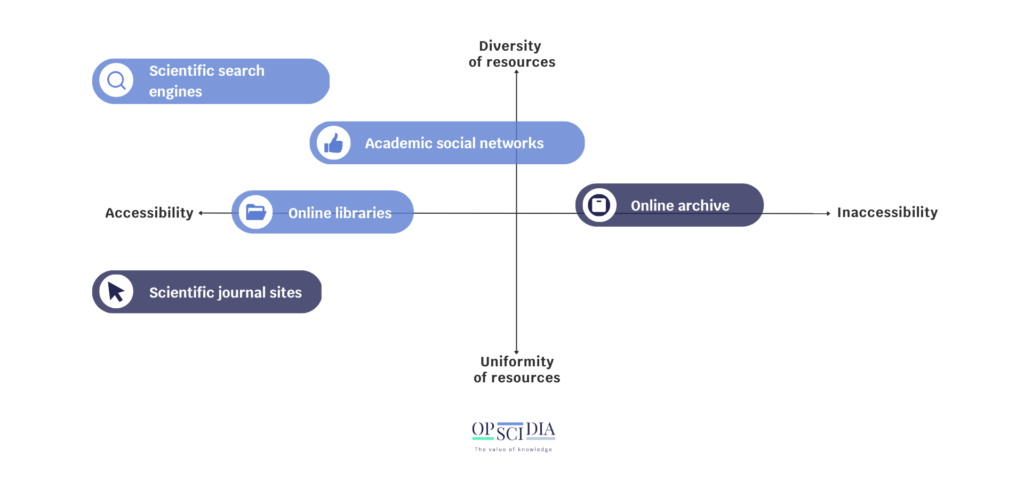
- Scientific search engines such as Google Scholar, PubMed, Scopus, or Opscidia provide access to a wide range of documents such as articles, books, theses, citations, and more.
- Online libraries, such as the World Digital Library, the UNESCO Digital Library, or the European Digital Library, offer scientific documents, e-books, manuscripts, and more.
- Online archives such as ArXiv, HAL, or BioRxiv are databases where scientific articles can be found in various research fields.
- Scientific journal websites, such as Nature, ScienceDirect, PlosOne, or SpringerLink, offer scientific articles, research reports, and data in a variety of scientific disciplines.
- Academic social networks, such as ResearchGate, Academia.edu, and Opscidia, are online platforms that allow researchers to share and exchange their scientific publications.
With such a large amount of data sources, each offering a unique type and quality of information, it can be difficult to navigate and collect relevant data from each source. Therefore, there are several techniques to help you target the most relevant scientific data source for your research.
2. Establishing a technology watch strategy.
Once you have mastered the different sources of information and the different types of scientific documents you can obtain, it is important to establish an organized watch in order to be as efficient as possible.

1. Define your objectives: As with any strategy, it is essential to define clear objectives and establish high-value milestones. Knowing your objectives will save you a considerable amount of time in the long run.
Ask yourself the following questions:
- What information do you want to collect?
- What do you want to do with this information?
- Who will benefit from this information?
Defining these elements will help guide your search and focus your efforts on the most relevant information.
2. Identify information sources: Thanks to the chapter “Understanding Technological Data Sources,” searching for information is no longer a mystery to you. Therefore, you know that it is important to identify the most relevant sources of information in your field and monitor them regularly.
3. Organize and process information: Once you have collected the information, it is important to organize and process it efficiently. Use information management tools such as RSS feed aggregators, online libraries, bibliographic databases, information management systems, summaries, and more.
4. Be regular and persistent: Technological watch is a continuous process. It is essential to keep up with trends and developments in your field on a regular and persistent basis. Schedule regular time for technological watch in your agenda and stay up to date with the latest information.
5. Share information: Technological watch is a collaborative process. Sharing the information you collect with your colleagues, partners, or clients is essential. To do this, it is important to consider the collaborative aspect when choosing your information management tool.
The essential collaborative features for collaborative monitoring
Sharing information, documents, projects
Liker and comment on scientific literature
Alert: Stay informed about the latest scientific research.
3. Analyze scientific documents.
Document analysis is a key method for conducting effective technological watch. It allows you to collect, sort, and analyze relevant information to identify trends, innovations, and emerging opportunities in a particular field. In this chapter, we will explore the 5 steps for analyzing scientific documents.

- Read the abstract and title: The abstract and title can give a general idea of the document’s topic, research question, and key findings. This can help you decide if the document is relevant to your research or not.
- Analyze the structure of the document: Most scientific documents follow a standard structure. Analyze the structure to understand how the authors organized their work and how information is presented. Later on, you can identify the parts that contain the most relevant information.
- Read carefully: Read the document that you have identified as relevant in its entirety, taking notes as you go. Note key information such as hypotheses, methods, and results.
- Evaluate the validity of the results: Evaluate the validity of the results by examining the methods used for data collection. Ensure that the results are reliable and that the conclusions are justified by the data.
- Evaluate relevance to your research: Finally, evaluate the document’s relevance to your research by comparing it to other sources you have reviewed. Ask yourself if the results and conclusions are consistent with other work in the field and if the document makes a significant contribution to the literature.
By following these steps, you can effectively analyze a scientific document to extract relevant information for your research. Once the analysis is complete, it is important to sort the documents based on the criteria you defined when setting your objectives.
4. Intelligent use of search engines (Boolean operators)
The scientific search engine is full of information. The multitude of information can give you the impression of not finding the right scientific document or information.
Knowing how to use a search engine is not given to everyone. There are some techniques that will allow you to optimize your searches:
Boolean operators: By using Boolean operators, you can make your searches more precise and therefore quickly identify the most relevant references.
For example:
- You are looking for articles that talk about microbiota OR microbes => Put the terms without quotes
- You then want to identify articles that specifically talk about “gram-negative” bacteria => Put the entire expression in quotes.
- You want to identify articles that talk about dysbiosis specifically in Crohn’s disease => Put the corresponding term for the disease in quotes.
- You want to identify articles that talk about microbiota AND inflammation => Put each of the two terms individually in quotes.
- Finally, you want to exclude articles that talk about microbiota on the skin => Add a minus sign in front of the term to be excluded = –skin (be careful not to put a space between the minus sign and the word that follows).

